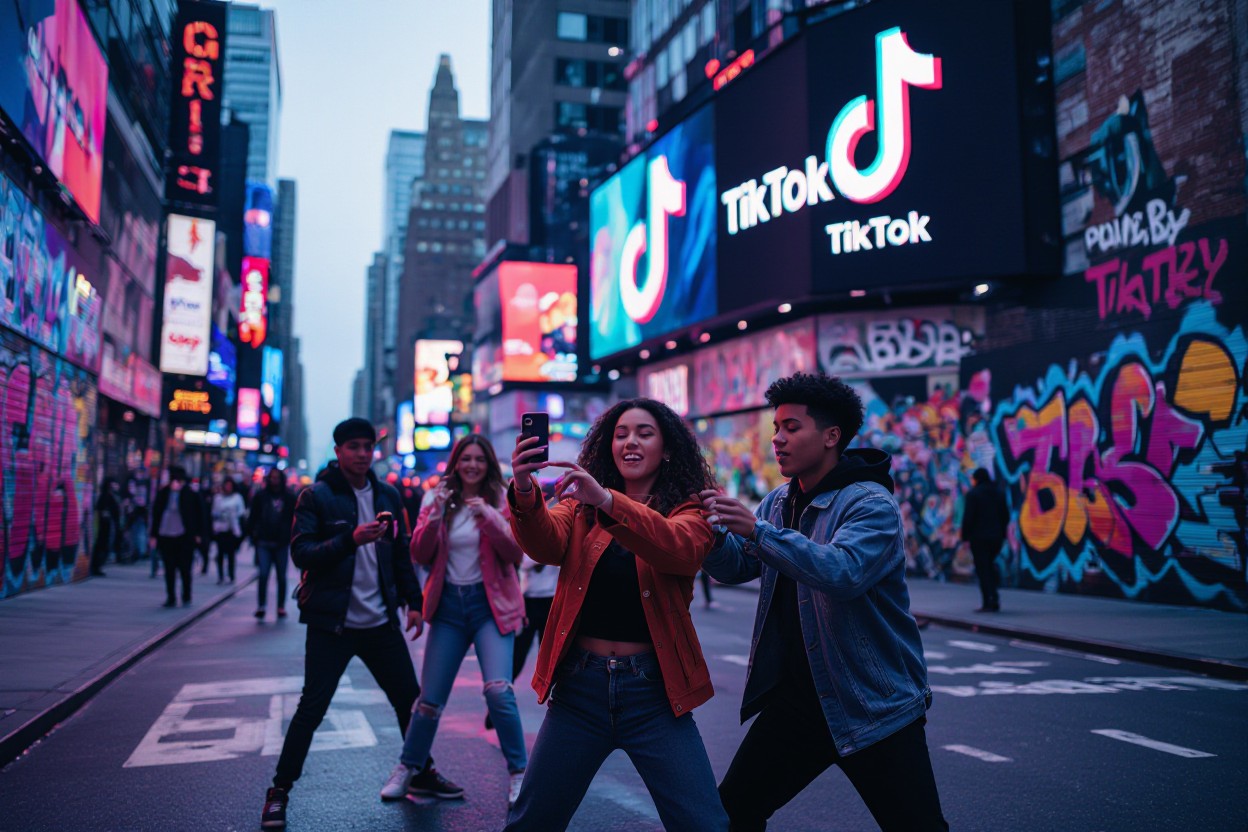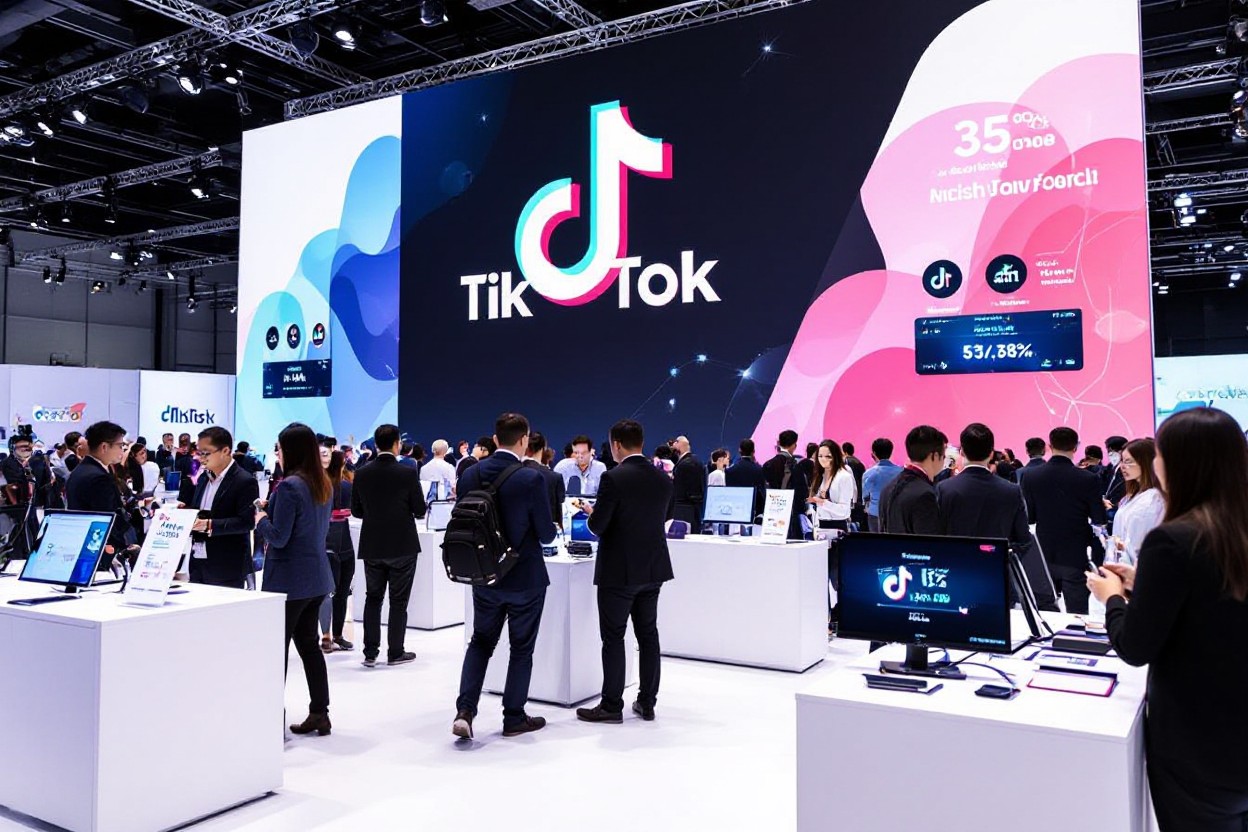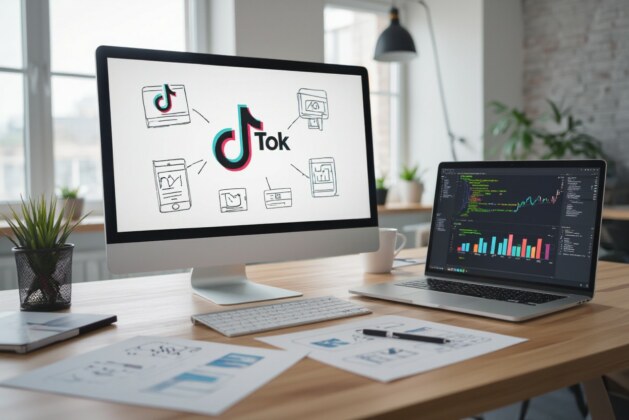It’s easy to think TikTok just appeared overnight, but understanding its origins reveals a fascinating journey. You might be surprised to learn that TikTok was created by the Chinese tech company ByteDance, launching initially as Douyin in 2016 before expanding globally as TikTok. Your use of this addictive app is shaped by innovative algorithms designed to capture attention quickly, which can be both a powerful way to discover creativity and a potential source of excessive screen time. Knowing this story helps you appreciate the technology and caution behind the platform you engage with daily.

The Birth of a Cultural Phenomenon
You’ve seen how TikTok’s explosive popularity transformed social media, but its rise was anything but accidental. Originating from innovative platforms designed to harness short-form video creativity, this app shaped content consumption by blending entertainment, music, and digital expression into a dynamic user experience. By 2020, TikTok boasted over 800 million active users worldwide, cementing its status not just as an app, but a cultural force that redefined how people interact online.
The Origins of Douyin: The Chinese Predecessor
Douyin launched in China in 2016, created by the tech company ByteDance to capture the essence of viral, short videos tailored for the Chinese market. Offering a seamless interface paired with advanced AI-driven recommendations, it quickly captivated millions daily. This app laid the technical foundation and creative blueprint that would evolve into TikTok, demonstrating the power of algorithmic content delivery combined with user-generated clips of 15 to 60 seconds.
The Rise of Musical.ly: A Platform for Creative Expression
Musical.ly emerged in 2014 as a hotspot where teenagers curated and shared lip-sync videos, gaining rapid traction among younger users. The app’s features encouraged creativity through its easy music integration, filters, and interactive challenges, fostering vibrant online communities. Artistic expression flourished, paving the way for TikTok’s later expansion beyond lip-syncing into diverse formats such as comedy, dance, and educational clips.
Musical.ly’s growth to over 100 million users by 2017 showcased the demand for short-form video content that allowed self-expression with minimal technical barriers. It also forged cultural moments via viral challenges and collaborations between influencers, which TikTok adapted and scaled globally after ByteDance acquired the platform in 2017. This merger combined Musical.ly’s engaged U.S. audience with ByteDance’s robust technology, setting the stage for TikTok’s worldwide domination.
The Genius Behind the Algorithm
The secret sauce of TikTok’s meteoric rise lies in its algorithm, which masterfully learns what content captivates your attention. This intelligent system personalizes your experience by analyzing countless data points, including watch time, likes, and even subtle gestures like pausing or re-watching. Such nuanced understanding enables TikTok to continuously serve you videos that feel tailor-made, creating an addictive feedback loop that keeps users scrolling for hours. This blend of machine learning and user behavior tracking sets the platform apart from its competitors.
ByteDance’s Innovative AI Technology
ByteDance, the parent company, pioneered TikTok’s AI technology using sophisticated machine learning models originally developed for news recommendation engines. Their AI evaluates not just explicit interactions but context clues like device type and network speed, optimizing content delivery in real time. By deploying this advanced system on a massive scale, ByteDance ensures millions of users see fresh, highly relevant videos almost instantly, exemplifying innovation that redefined social media engagement.
How TikTok Captured User Engagement
Instead of presenting broad-interest content, TikTok dives deep into micro-niches using its algorithm, presenting videos that match your specific tastes with remarkable accuracy. This focus on hyper-personalized content means your For You page evolves dynamically, often revealing new interests and creators aligned with your unique viewing habits. The app’s intuitive design encourages rapid interaction, making every swipe a seamless transition to something you didn’t know you wanted but quickly love.
Diving deeper, TikTok’s engagement strategy also hinges on short video lengths that fit modern attention spans, combined with tools like duets and stitches that empower you to participate creatively. This interactivity transforms passive viewers into active contributors, fueling viral trends and community-building phenomena. Its use of soundtracks and hashtags further enhances discoverability and emotional connection, turning simple clips into cultural moments that resonate globally yet feel personally relevant to you.

Global Expansion and Rebranding
Expanding beyond China’s borders required ByteDance to rethink their approach, leading to the unification of Musical.ly and TikTok under one global brand. This rebranding effort streamlined user experiences, making it easier for millions worldwide to engage with the platform’s short-form video creativity. By merging features and consolidating audiences, TikTok rapidly grew its footprint in North America, Europe, and other key markets. The combination intensified TikTok’s appeal and accelerated its rise to becoming the most downloaded app on the App Store in late 2018 and 2019.
The Transition from Musical.ly to TikTok
The simultaneous operation of TikTok and Musical.ly caused brand confusion, which ByteDance solved by merging the two in August 2018. Users on Musical.ly were seamlessly migrated to TikTok, where they retained their follower base and content history. This transition preserved loyal users while inviting them to explore the enriched features TikTok offered, such as enhanced AI-driven recommendations and broader community engagement. The move effectively converted Musical.ly’s teen-centric userbase into TikTok’s global community, propelling TikTok’s explosive growth trajectory.
Strategic Marketing Moves That Drove Popularity
ByteDance’s marketing strategy leaned heavily on influencer partnerships and viral challenges tailored to local cultures, pushing TikTok into the global spotlight. Collaborations with popular creators and aggressive presence on platforms like Instagram and YouTube helped TikTok tap into established online communities. Leveraging data analytics, TikTok identified viral content trends and swiftly adapted, allowing the app to maintain user interest and engagement sharply higher than competitors like Snapchat or Instagram Reels.
More intensive efforts included orchestrated hashtag challenges that incentivized user participation through prizes or social recognition, sparking waves of viral content creation. TikTok’s sponsorship of music festivals and pop culture events also expanded brand visibility beyond the digital realm. This multi-pronged marketing mix, coupled with a finely-tuned algorithm delivering personalized streams, ensured that TikTok didn’t just attract users, but kept them coming back, turning casual viewers into active content creators and community members worldwide.
TikTok’s Impact on Social Media Landscape
You’ve witnessed how TikTok swiftly altered the social media game by prioritizing short, bite-sized video content that maximizes engagement through its algorithmic feed. This personalized discovery feed breaks down traditional follower hierarchies, giving anyone the chance to go viral overnight. TikTok’s rapid user base growth, now exceeding 1 billion monthly active users, forces other platforms to adopt similar features, effectively reshaping how content is created, consumed, and monetized across the digital world.
Analyzing the Shifts in User Behavior
TikTok has revolutionized user attention spans and interaction patterns by encouraging quick, highly visual storytelling. You likely find yourself scrolling through endless videos optimized for immediate engagement, contrasting with the longer, curated posts on other platforms. This shift toward spontaneous creativity has elevated user participation, with 90% of TikTok users posting or interacting regularly, illustrating how content consumption has become more active and immersive than ever before.
The App’s Role in Pop Culture and Music Trends
The app’s immersive format has turned it into a powerful launchpad for artists and cultural moments. Viral challenges, dance trends, and meme formats on TikTok have propelled obscure tracks to global chart-toppers. For instance, Lil Nas X’s “Old Town Road” skyrocketed to fame largely because of TikTok’s user-driven memes and remixes, exemplifying how the platform directly shapes mainstream music and pop culture narratives.
Diving deeper, TikTok’s algorithm amplifies emerging artists by spotlighting short, catchy snippets of songs that users remix in creative ways, often sparking global phenomena. This has disrupted traditional music promotion strategies, with labels now focusing heavily on TikTok virality when releasing new tracks. Beyond music, viral challenges and trends originating on TikTok frequently spill into advertising, television, and even political campaigns, solidifying its role as a cultural amplifier in the digital age.

Controversies and Challenges
TikTok’s meteoric rise hasn’t been without significant hurdles. From intense scrutiny over data security to bans in several countries, you’ll find its journey punctuated with battles against skepticism. Navigating global regulatory landscapes strained the platform’s operations, while debates on content moderation and user safety continually put TikTok in the spotlight. Such controversies have shaped how you perceive the app today, influencing both policy and public opinion.
Regulatory Hurdles and Data Privacy Concerns
Ministries and governments, including the US, India, and several European nations, flagged TikTok for potential data privacy violations, leading to trials, investigations, and even outright bans. The opaque Chinese ownership structure fueled fears over sensitive user data possibly reaching foreign governments, prompting ByteDance to invest heavily in transparency and compliance measures. For you as a user, these concerns emphasize the importance of understanding who safeguards your personal information on such apps.
The Impact of External Events on TikTok’s Reputation
Global geopolitical tensions, especially US-China relations, intensified scrutiny on TikTok’s operations. The app was ensnared in diplomatic disputes and became a symbol of larger battles over technology control and national security. Such external pressures not only stalled TikTok’s market expansion but also influenced public perception, making trust a major challenge for the platform you use daily.
Diving deeper, you see that TikTok’s reputation suffered as it was repeatedly targeted in broader political narratives. The 2020 US threat to ban the app over data privacy concerns reflected wider anxieties about Chinese tech firms. Similarly, India’s permanent ban after border conflicts amplified fears around digital sovereignty and cyber espionage. These events forced TikTok to increase advocacy for openness, creating new data centers overseas and emphasizing user control to reassure its global audience while battling the stigma of foreign interference.
Summing up
To wrap up, you now know that TikTok was created by the Chinese company ByteDance, founded by Zhang Yiming. The app’s rapid global success stems from its innovative algorithm and engaging short-video format. Understanding this background gives you insight into how TikTok transformed social media and why it continues to shape digital trends worldwide. This knowledge can help you better appreciate the platform’s impact on content creation and online interaction.





Leave a comment